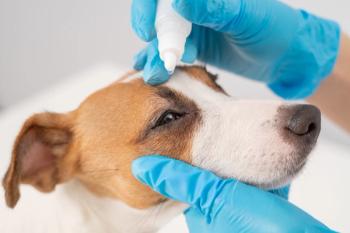
Equine Cushing Disease Around the World
A recent survey study examined the international prevalence, diagnosis, and treatment of this endocrinopathy.
Pituitary pars intermedia dysfunction (PPID), also known as equine Cushing disease, typically occurs in horses over age 18. Current diagnostic tools for PPID include detection of suggestive clinical signs, such as hirsutism, and measurement of endogenous adrenocorticotropic hormone (ACTH).
Results of a global study recently published in The Canadian Journal of Veterinary Research outline the estimated prevalence, diagnosis, and treatment of PPID.
Study Design
The investigators approached equine veterinarians with an online survey, made available through international veterinary groups and organizations, to evaluate recent experience with PPID cases. A paper survey was distributed to attendees at the 2012 American Association of Equine Practitioners annual meeting.
RELATED:
- The Equine Referral Experience
- CVC 2018: Crush the Cush! What's New With Hyperadrenocorticism?
Linear regression analyses were used to compare answers by practice type and geographic region, including North America, South America, Europe, Australasia, the Middle East, and Africa.
Results
A total of 426 veterinarians from 20 countries completed the survey. Most respondents were from the United States and Canada. Most respondents worked in equine specialty practice (31.0%), followed by general mixed (15.3%), large animal (12.2%), and combined small animal and equine (11.0%) practice. Eighty-five percent of respondents reported seeing at least 1 PPID case, and the median number of cases was 5 per veterinarian and 1% of the equine caseload.
Horses diagnosed with PPID averaged 20 years of age. While 67% of cases were managed medically, 33% were treated in alternate ways or not at all. The drug of choice for PPID treatment was almost exclusively commercially available or compounded pergolide mesylate, while cyproheptadine, trilostane, and bromocriptine were chosen rarely. Alternative treatments included dietary management, herbal therapy, exercise, acupuncture, immunomodulation, and parasite management. Reported reasons for foregoing treatment included client limitations, lack of available drugs, or because treatment was “not warranted.”
Seventy-one percent of respondents believed that PPID was an important equine disease, and 54% expressed the need for a new approach to managing the disease.
The authors limited certain statistical analyses to data from North American and European veterinarians, due to the relatively low response from practitioners from other geographic regions. On these 2 continents, veterinarians working in equine specialty practices reported a greater number of PPID cases than did other veterinarians. Twenty-seven percent of respondents used the presence of clinical signs as the only diagnostic test for PPID, whereas the most common adjunct test performed was ACTH measurement. None of the examined factors, including geographic location, was associated with the decision to treat or not to treat PPID cases.
What We Know
In this study, most veterinarians who treated horses encountered cases of PPID. Many respondents, especially those in Europe, used the presence of clinical signs rather than a specific test to diagnose PPID. Suggestive clinical signs do have high documented diagnostic sensitivity and specificity values for PPID, and there is no consensus on a definitive diagnostic test for PPID in its early stages. Thus, the authors indicated a global need for increased research on PPID detection and long-term management.
Dr. Stilwell received her DVM from Auburn University, followed by a MS in fisheries and aquatic sciences and a PhD in veterinary medical sciences from the University of Florida. She provides freelance medical writing and aquatic veterinary consulting services through her business, Seastar Communications and Consulting.
Newsletter
From exam room tips to practice management insights, get trusted veterinary news delivered straight to your inbox—subscribe to dvm360.




